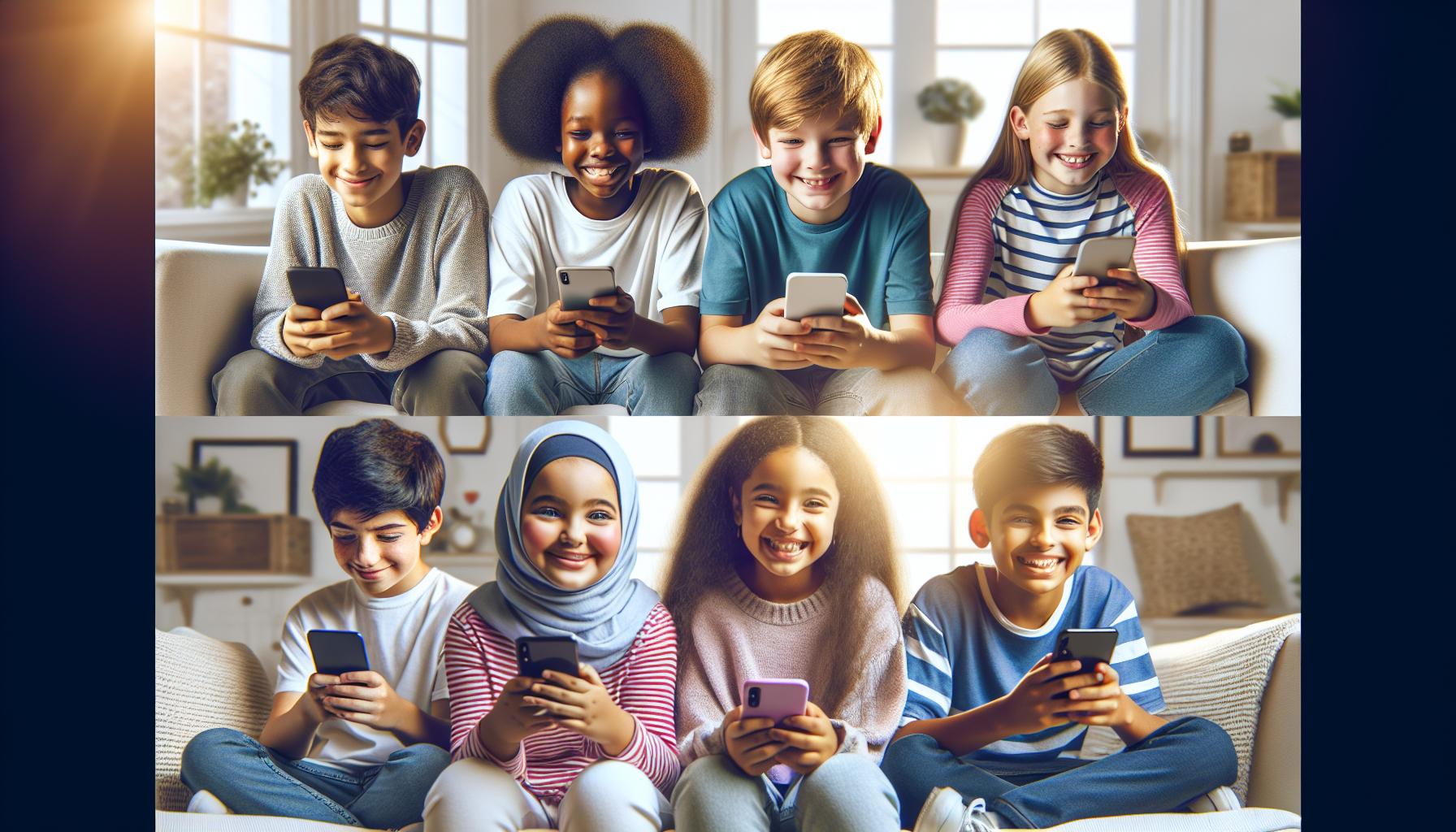Navigating the world of social media with tweens can feel like walking through a digital minefield. As kids eagerly dive into the social media landscape parents need reliable guidance to keep their 12-year-olds both connected and protected in today’s digital age.
From kid-friendly platforms to modified versions of popular apps there’s a growing selection of age-appropriate social media options designed specifically for young users. These apps offer the perfect balance of entertainment and safety features while helping tweens develop healthy online habits. They’ll stay connected with friends share their creativity and build digital literacy skills – all within a controlled environment that puts parents’ minds at ease.
Understanding Social Media Age Restrictions
Social media platforms enforce age restrictions to protect young users from inappropriate content and potential online risks. These age limits align with data privacy regulations and child protection laws worldwide.
Why Age Limits Matter
Age restrictions on social media platforms protect children’s personal data and shield them from mature content. The Children’s Online Privacy Protection Act (COPPA) requires parental consent for collecting data from users under 13. These limits safeguard kids from cyberbullying, online predators, targeted advertising. Mental health risks associated with early social media exposure include anxiety, depression, poor sleep quality. Age-appropriate content filtering systems activate automatically when users register with their birth date, creating a safer online environment for young users.
Common Age Requirements
Social media platforms maintain specific minimum age requirements for account creation:
| Platform | Minimum Age | Special Features |
|---|---|---|
| 13 | Teen safety tools | |
| TikTok | 13 | Family Pairing mode |
| Snapchat | 13 | Parent Guide controls |
| 13 | Messenger Kids (6-12) | |
| YouTube | 13 | YouTube Kids available |
| 16 (EU) / 13 (US) | None |
Modified versions of these apps include enhanced privacy settings, content filters, time management tools. Parent dashboard features enable monitoring of activity, friend connections, content sharing. Educational resources within these platforms teach digital citizenship skills to young users.
Best Social Media Apps for Tweens

Social media platforms offer modified versions with enhanced safety features specifically designed for young users. These family-friendly options include parental controls integrated monitoring systems to create a safer online environment for tweens.
TikTok Family Pairing
TikTok Family Pairing connects parent and child accounts through a QR code system. Parents gain access to control screen time limits setting boundaries between 40 to 120 minutes per day. The feature restricts direct messages automatically disables them for users under 16 enables content filtering to limit exposure to inappropriate videos. Parents monitor their child’s follower list view account activity reports customize privacy settings to determine who can interact with their tween’s content.
Snapchat’s Family Center
Snapchat’s Family Center provides parents real-time insights into their teen’s social connections. The dashboard displays a complete list of their child’s friends allows parents to report concerning accounts directly to Snapchat’s safety team. Parents view the accounts their teens interact with most frequently receive notifications about new friend additions. The tool maintains teen privacy by not revealing message content or Snap exchanges while focusing on relationship monitoring safety oversight.
Instagram’s Supervision Tools
Instagram’s supervision features let parents set specific time limits manage account privacy settings. Parents receive notifications about accounts their teen follows reports about blocked users inappropriate content reports. The tool includes weekly updates showing average daily time spent on the app schedules automatic breaks during study homework hours. Instagram’s system allows teens to notify parents when they report another user empowers young users to actively participate in their online safety.
Safety Features Parents Should Know
Modern social media apps incorporate robust safety mechanisms designed specifically for young users. These features empower parents to create secure digital environments for their 12-year-olds while maintaining appropriate oversight.
Privacy Settings
Privacy settings form the foundation of social media safety for young users. Account visibility options limit profile access to approved followers, keeping personal information protected from strangers. Location sharing remains disabled by default on kid-focused platforms, preventing geographic tracking. Friend request settings require parental approval before new connections are established. Built-in reporting tools enable quick flagging of inappropriate interactions or suspicious accounts. Messaging restrictions block communication from unknown users, creating a controlled social environment.
Content Filters
Content filtering technology screens posts, videos, images for age-appropriate material. Advanced AI systems detect explicit content, hate speech, bullying language, removing it automatically from feeds. Safe search modes filter search results to display only kid-friendly content. Custom word filters block specific terms or phrases parents deem inappropriate. Age-appropriate content categories ensure tweens see material suitable for their development level. Community guidelines enforce strict content standards through active moderation.
Time Management Controls
Screen time management tools help establish healthy digital habits. Daily usage limits cap app access at parent-specified durations. Scheduled downtimes automatically restrict access during homework, meals or bedtime hours. Activity reports track time spent on different features within apps. Break reminders encourage regular screen-free intervals throughout the day. Usage statistics provide insights into engagement patterns, helping parents optimize screen time boundaries. Pause features enable temporary app access suspension when needed.
Risks and Warning Signs
Social media platforms expose young users to various online risks that require active monitoring and prevention strategies. Parents and tweens need to recognize potential dangers and implement protective measures for safe online interactions.
Cyberbullying Prevention
Online harassment affects 59% of teens, with social media platforms being the primary venue for cyberbullying incidents. Warning signs include sudden changes in device usage patterns, emotional distress after online sessions or decreased interest in social activities. Parents monitor their tween’s digital interactions through:
- Setting up privacy controls to limit contact to known friends
- Installing monitoring software that flags concerning messages
- Creating open communication channels about online experiences
- Documenting instances of harassment with screenshots
- Reporting abusive behavior to platform moderators
Online Predator Awareness
Sexual predators target 1 in 7 young users through social media platforms, often using deceptive tactics to establish trust. Common grooming behaviors include:
- Sending unsolicited gifts or money through digital platforms
- Requesting private information or personal photos
- Moving conversations to private messaging apps
- Creating fake profiles that impersonate peers
- Encouraging secrecy about online relationships
Parents enable protective features:
- Location sharing restrictions
- Friend list visibility controls
- Direct message limitations
- Content filtering systems
Digital Footprint Management
Every social media interaction creates lasting digital records that impact future opportunities. Studies show 70% of college admissions officers review applicants’ social media presence. Essential management practices include:
- Reviewing privacy settings monthly
- Avoiding sharing personal identifying information
- Removing location data from posted photos
- Using appropriate usernames across platforms
- Monitoring tagged content from friends
- Implementing strict friend acceptance policies
- Track content sharing patterns
- Review connected applications
- Monitor account security settings
- Manage third-party permissions
Positive Uses of Social Media for Tweens
Social media platforms offer valuable opportunities for tweens to develop digital literacy skills and engage in meaningful online interactions. These platforms create spaces for learning, creativity and personal growth when used appropriately.
Educational Opportunities
Social media enhances learning through interactive educational content like video tutorials, educational channels and virtual study groups. Platforms such as YouTube Kids feature STEM experiments, historical documentaries and language learning videos curated for young viewers. Educational hashtags connect tweens to global learning communities where they share homework tips, discuss books and collaborate on school projects. Digital citizenship skills develop naturally as tweens learn to fact-check information, evaluate sources and engage in respectful online discussions with peers.
Creative Expression
Social media empowers tweens to showcase their artistic talents through photos, videos, music and digital art. Apps like TikTok encourage creative storytelling through 60-second videos while Instagram provides a gallery for sharing artwork, photography and DIY projects. Digital tools enable tweens to edit content, add special effects and develop technical production skills. Creative challenges and hashtag campaigns inspire tweens to experiment with new art forms, participate in collaborative projects and receive constructive feedback from supportive online communities. Content creation builds confidence as tweens discover their unique artistic voice.
Setting Healthy Boundaries
Digital boundaries create a structured framework for tweens to engage with social media safely while maintaining balance in their daily lives. These guidelines protect mental health and promote responsible online behavior.
Screen Time Limits
Screen time management tools enable parents to set specific usage parameters for social media apps. Apple’s Screen Time and Google’s Family Link track daily app usage, allowing parents to establish limits between 30-120 minutes per day. These platforms send automatic notifications when time limits approach and lock apps once the allocated time expires. Parents can customize active hours for different days, such as setting shorter limits on school nights versus weekends. Research shows tweens who follow structured screen time limits report better sleep patterns and improved academic performance.
Family Media Agreements
Family media agreements establish clear expectations for social media use through documented guidelines. These contracts outline specific rules about:
- Designated device-free zones: Kitchen tables bedrooms bathrooms
- Approved apps social networks: Instagram Kids YouTube Kids Messenger Kids
- Content sharing protocols: No personal information location data photos with strangers
- Time management rules: Complete homework before social media usage finish online activities by 8 PM
- Privacy protection measures: Regular password updates private account settings friend request approvals
- Response protocols: Report cyberbullying block suspicious users inform parents of concerns
Each family member signs the agreement creating mutual accountability and understanding of digital boundaries.
Conclusion
Navigating social media for 12-year-olds requires a balanced approach that prioritizes both safety and engagement. By choosing age-appropriate platforms with robust safety features parents can help their tweens develop healthy digital habits while staying protected from online risks.
The key lies in implementing comprehensive safety measures partnered with open communication. Through family media agreements proper monitoring tools and active involvement parents can create a secure digital environment that allows their tweens to explore connect and learn responsibly.
With the right guidance and tools tweens can harness the positive aspects of social media while building essential digital literacy skills for their future.





